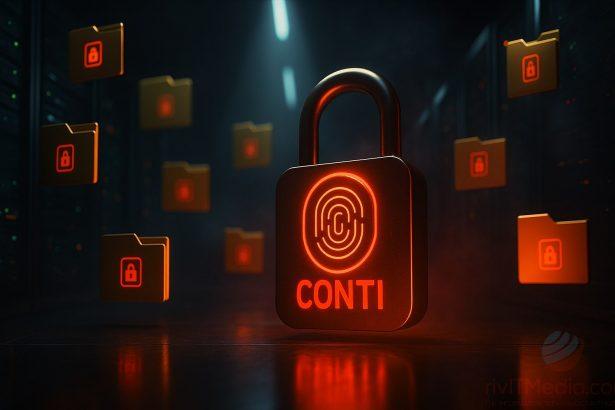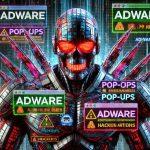BOBER is a crypto‑virus / ransomware strain—an offshoot of the notorious CONTI family. It infects Windows systems, encrypting files and appending a string of random characters as the new file extension. Victims find their data locked and receive a ransom demand in a file named R3ADM3.txt.
Threat Overview
| Category | Details |
|---|---|
| Threat type | Ransomware (crypto‑virus, file locker) |
| Encrypted file extension | Random character string |
| Ransom note file name(s) | R3ADM3.txt |
| Cyber‑criminal contact | via qTox or Tor website |
| Detection names | Avast: Win32:Conti‑B, Combo Cleaner: Gen:Heur.Ransom.REntS.Gen.1, ESET: Variant Of Win32/Filecoder.Conti.AI, Kaspersky: HEUR:Trojan‑Ransom.Win32.Generic, Microsoft: Ransom:Win32/Conti.AD!MTB |
| Symptoms of infection | Files become inaccessible; extensions change to random strings; ransom message displayed |
| Damage & distribution | Files encrypted irreversibly without decryption key; additional password‑stealing trojans may also install. Spread via infected email attachments, pirated software/keygens, technical support scams, torrents, malicious ads |
| Danger level | High (full encryption, data extortion, potential data leak threats) |
| Removal tool | SpyHunter (Download Here) |
Ransom Note Text
Below is an excerpt of the ransom note left in R3ADM3.txt:
All of your files are currently encrypted by BOBER strain. If you don’t know who we are – just “Google it.”
As you already know, all of your data has been encrypted by our software. It cannot be recovered by any means without contacting our team directly.
DON’T TRY TO RECOVER your data by yourselves. Any attempt to recover… can damage your files.
DON’T TRY TO IGNORE us. We’ve downloaded a pack of your internal data and are ready to publish it on our news website if you do not respond.
DON’T TRY TO CONTACT feds or any recovery companies. We have informants in these structures… complaints will be directed to us.
To prove we REALLY CAN get your data back – we offer to decrypt two random files free of charge…
If you can’t use the onion panel, download qTox… TOX ID: 741C2229CA…39112… contact via Tor site.
We will speak only with an authorized person (CEO, top management)… DO NOT CONTACT US otherwise
Detailed Evaluation
How I Got Infected
BOBER typically arrives via social engineering or counterfeit software distribution channels—such as cracked keygens, pirated applications, malicious email attachments, or deceptive ads. Exploiting unpatched vulnerabilities or removable media also offers entry points.
What It Does
Once executed, BOBER encrypts most user files, replacing original extensions with random character strings and leaving the ransom note on the desktop and in encrypted folders. It may also drop additional malware—particularly trojans designed to steal credentials or harvest sensitive data.
Should You Be Worried?
Yes. This is a high‑severity threat—there is no known free decryptor for BOBER, files are encrypted using strong methods, and attackers threaten to leak stolen data if ransom demands aren’t met. Additionally, they push victims not to seek external recovery help, increasing risk of permanent loss or further extortion.
Manual Ransomware Removal Process
Important: Manual removal is recommended only for experienced users, as incorrect actions can lead to data loss or incomplete removal of the ransomware. If unsure, consider the SpyHunter Removal Method for a guided, automated solution.
Step 1: Disconnect from the Internet
- Immediately disable Wi-Fi or unplug the Ethernet cable to prevent the ransomware from communicating with remote servers.
- This can prevent additional encryption or further infections.
Step 2: Boot into Safe Mode
For Windows Users
- Windows 10/11:
- Press Windows + R, type
msconfig, and press Enter. - Under the Boot tab, select Safe boot and check Network.
- Click Apply, then OK, and restart your PC.
- Press Windows + R, type
- Windows 7/8:
- Restart your PC and press F8 repeatedly before Windows starts.
- Select Safe Mode with Networking and press Enter.
For Mac Users
- Restart your Mac and hold the Shift key immediately after the startup chime.
- Release the key when the Apple logo appears.
- Your Mac will boot in Safe Mode.
Step 3: Identify and Terminate Malicious Processes
Windows
- Open Task Manager by pressing Ctrl + Shift + Esc.
- Look for unusual processes consuming high CPU or memory.
- Right-click on the suspicious process and select End Task.
Mac
- Open Activity Monitor (Finder > Applications > Utilities > Activity Monitor).
- Look for unknown or high-resource-consuming processes.
- Select the suspicious process and click Force Quit.
Step 4: Delete Ransomware Files
Windows
- Open File Explorer and navigate to:
C:\Users\[Your Username]\AppData\LocalC:\Users\[Your Username]\AppData\RoamingC:\Windows\System32
- Identify and delete suspicious files (randomly named or recently modified items).
- Clear temporary files:
- Press Windows + R, type
%temp%, and hit Enter. - Delete all files in the Temp folder.
- Press Windows + R, type
Mac
- Open Finder and select Go > Go to Folder.
- Type
~/Library/Application Supportand check for unfamiliar files or folders. - Remove unknown
.plistfiles from~/Library/LaunchAgents.
Step 5: Remove Ransomware Entries from Registry or System Settings
Windows
- Press Windows + R, type
regedit, and hit Enter. - Navigate to:
HKEY_CURRENT_USER\SoftwareHKEY_LOCAL_MACHINE\Software
- Identify and delete ransomware-related registry entries.
Mac
- Open System Preferences > Users & Groups.
- Select the Login Items tab and remove any unknown startup programs.
- Check
~/Library/Preferencesfor malicious settings.
Step 6: Restore System Using a Backup or Restore Point
Windows
- Press Windows + R, type
rstrui, and press Enter. - Choose a restore point from before the infection and proceed.
Mac
- Restart your Mac and enter macOS Utilities by holding Command + R.
- Select Restore from Time Machine Backup and restore a safe backup.
Step 7: Attempt to Decrypt Files
- Check No More Ransom (www.nomoreransom.org) for available decryption tools.
- If unavailable, restore files from backups.
Automated Ransomware Removal with SpyHunter
If manual removal is too complex or risky, SpyHunter offers a safer, automated method for detecting and removing ransomware.
Step 1: Download SpyHunter
- Get SpyHunter from the official Enigma Software website.
Step 2: Install SpyHunter
- Open the downloaded file (
SpyHunter-Installer.exeor.dmgfor Mac users). - Follow the installation prompts.
- Launch SpyHunter upon completion.
Step 3: Run a Full System Scan
- Click Start Scan Now to detect malware and ransomware.
- Wait for the scan to complete and review detected threats.
Step 4: Remove Detected Ransomware
- Click Fix Threats to remove identified ransomware components.
- SpyHunter will clean your system automatically.
Step 5: SpyHunter’s Custom Malware HelpDesk
- If ransomware persists, use SpyHunter’s Malware HelpDesk for custom malware fixes.
Step 6: Restore Files
- Use backups stored on external drives or cloud storage.
- If no backup is available, check No More Ransom for decryption tools.
Preventing Future Ransomware Attacks
- Keep backups: Use cloud storage or an external hard drive.
- Install a reliable security tool: SpyHunter offers real-time protection against malware.
- Enable Windows Defender or Mac security features for additional protection.
- Avoid phishing emails and unknown attachments.
- Regularly update Windows, macOS, and installed applications.
Conclusion
BOBER is a potent variant of CONTI ransomware, capable of fully encrypting files and coercing victims with data‑leak threats. Since no free decryptor currently exists, recovery depends on backups or engaging with the attackers—each carries risks. If you're infected, use SpyHunter to fully remove the malware and quarantine remnants—but data restoration may not be possible without paying.




